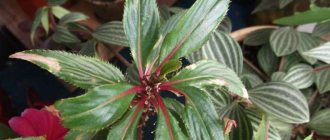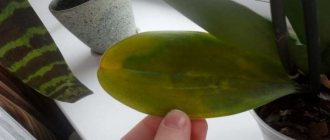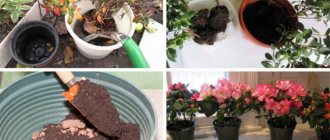Azalea is a rather demanding plant, so it can easily dry out completely and die due to improper conditions. But there is a way out of this situation. There are several options for how to save an azalea. Its restoration should begin immediately after the first signs of wilting are detected.
Azalea dries out from improper care or disease
What is drying out of a houseplant?
Drying is a phenomenon when more water evaporates from plant leaves than enters them from the soil and air.
Azalea is a very demanding flower to the environment. She can't stand the heat and will be much more comfortable in a cool place. The optimal temperature is from 12 to 18 degrees. The flower is also intolerant to direct sunlight. At the same time, she will not be able to survive in a dark place. It is important! You cannot expose an azalea to a stressful situation during transportation and buy it in winter: it will freeze and not one or two layers of craft paper will save the plant.
Appearance
During drought, the appearance of an azalea may change even before the active phase begins.
Signs of drought:
- the appearance of dry grayish spots;
- pest invasion (read about pests and diseases of azaleas here);
- the appearance of brown or brown spots;
- the tips of the leaves dry out and turn brown;
- leaf fall.
What is the danger to rhododendron?
Azalea is a very delicate flower and may simply not tolerate drying out. It should not be left to grow in a small pot for a long time. After flowering has ended, it must be replanted using the transshipment method.
Lack of attention to environmental conditions, pot size and soil composition can be dangerous for the plant. Drafts and frequent temperature changes will result in leaves turning brown and drying out for the plant. Another reason for the formation of brown tips on the leaves is the use of too hard water for watering. Or the plant is too dry.
Transplanting into a wide pot
The root system of the plant is superficial. If the flower grows in a high and deep container, there is a high risk of excessive watering of the flower and rotting of the roots. Outwardly, this manifests itself in yellowing and drying of leaves and individual branches. Transplant the azalea into a wide and flat ceramic pot with high drainage expanded clay (2-3.5 cm).
For 2-4 weeks after transplantation, monitor watering (do not over-moisten the soil or allow it to dry out) and the general condition of the plant.
How not to harm a houseplant?
Today, there are many varieties of beautifully flowering indoor plants from the Rhododendron genus on sale (in floriculture, azaleas continue to be separated from other representatives of the Rhododendronaceae).
All modern varieties of this home beauty come from two species: Sims azalea and Japanese azalea.
Hybrids have different shapes, sizes and colors of buds - from snow-white to rich coral and dark lilac. Among them there are varieties bred by our breeders. This is, for example, the indoor beauty Cinderella, which has not very large multi-layered flowers of a soft lilac color.
Indoor shrubs from the rhododendron genus are quite capricious and require special attention.
Despite the fact that all varieties of indoor shrubs are bred artificially, when caring for them, one should take into account the characteristics of the life of this plant in the wild. Caring for him is based precisely on this.
Light and temperature
In nature, rhododendrons like to hide in the partial shade of other plants. After all, they grow in mountain forests.
Domestic varieties also do not like sunlight directed directly at them. Therefore, you need to place pots with shrubs in somewhat shaded places.
If the indoor shrub is constantly located on the southern windowsill, yellow or simply dry spots may appear on the leaves. These are sunburns.
In general, azalea is very sensitive to temperature conditions. In summer the air should be 20 - 22 ◦C, and in winter - no higher than 15 ◦C. Therefore, there is definitely no place for it on the windowsill above the radiators. Because of this, buds and leaves may dry out and fall off.
Humidity and watering
Since plants of this genus come from the mountainous regions of India and China with a humid climate, rhododendrons at home also love air with high humidity. They respond well to spraying and even warm rain in the garden or on the balcony.
The flower needs to be sprayed 1 - 2 times a day. But when it blooms, spraying is stopped, since the delicate buds may fall off without blooming.
At the same time, the plant does not tolerate overwatering or stagnation of water. Because of this, the leaves may become covered with brown spots or turn black around the edges. In addition, due to stagnation of water, the thin roots of the plant can rot. This will lead to the death of the bush.
You should not water it with water directly from the tap. It is better to use rain or river water. But it should be at room temperature.
This is one of the few indoor plants that prefers acidic soil - a mixture of peat and pine humus.
Features of azalea care
Not all flower lovers know that the homeland of this plant is the south of North America, Japan, China and Southeast Asia. Her imaginary “whims” are quite understandable: the plant is accustomed to certain climatic conditions and when they change, it begins to get sick.
It is important to keep its growing conditions as close to natural as possible:
- Lighting – diffused light or partial shade (azalea does not tolerate exposure to direct sunlight).
- Temperature – in winter 12…14 °C, but can tolerate temperatures of 20…22°C. If plants were taken out into the garden for the summer, it is important to bring them into the house before turning on the heating. This way, the azaleas will not experience stress from a sudden increase in temperature.
- Air humidity is high, within 75-80%.
- Ventilation mode. Azaleas need fresh air. In winter, the room is ventilated daily, and in summer it is advisable to take the flower out into the garden or onto the balcony in a place protected from the bright sun.
Having chosen the right place in the house, they carry out competent care, without deviating from the preferences of the plant:
- Watering. Not only the temperature of the water is important, but also the degree of its hardness. Use soft, melted water at room temperature.
- The soil. The best soil is considered to be acidic, with a pH of 3...3.5. To prepare the soil yourself, take: coniferous soil (2 parts), leaf soil (2 parts), heather soil (1 part), peat (1 part) and river sand (1 part). To save effort and time, you can buy a ready-made soil mixture (for example, “Azalea”, “Coniferous” or “Anthurium”).
- Landing. Young seedlings are replanted annually, adult specimens - after 3-5 years. Since the plant's roots react sharply to lack of air exchange, choose a container made of ceramic or clay with a drainage hole.
- Fertilizer. Feeding the flower is necessary during the period of active growth and flowering, from November to March. As fertilizers, it is better to use mixtures and liquid fertilizers designed specifically for azaleas. If you don’t have them on hand, use a complex mineral fertilizer.
- Crown formation. To give the crown neatness and splendor, as the shoots grow by 5 cm, pinch 2-3 buds. This event stimulates the growth of lateral buds. For the whole year, 2-3 pinches are made. To give the azalea the appearance of a tree on a trunk, at a young age, leave 1 main shoot, which is pinched at a height of 20-22 cm. Overgrown branches from the lateral buds are pinched according to the standard pattern.
The azalea reacts to any stressful situation (moving the pot to another window, turning on the radiators, burns) by drying out. As first aid, water the plant with Zircon solution (1 ampoule/bucket of water).
Further care
The main components of proper care:
- diffused light;
- abundant infrequent watering;
- loosening the soil;
- maintaining soil acidity levels;
- low air temperature in the room with the azalea.
Sufficient air humidity for this plant is 80%.
It is better to apply complex fertilizing in the spring. Special fertilizers are suitable for these purposes:
- to stimulate the formation of inflorescences, compositions with phosphorus and potassium are added;
- for shoot growth - nitrogen compounds.
It is better to prune bushes in May. Old or very elongated shoots must be pruned. 14-20 days after pruning, the bush is covered with new leaves.
Watch a video about proper care of azaleas.
So, azalea is a whimsical and capricious flower. Violation of care leads to the appearance of dangerous symptoms and conditions. The plant needs to be revived or saved if there is massive yellowing, wilting, or death of leaves and other organs. Measures and methods of revival depend on the exact cause of the phenomenon.
The azalea has dried up, how to save it? Features of caring for azalea Azalea is a very beautiful and unusual plant. But at the same time, it is quite delicate and requires care. This is why the plant is very often susceptible to various diseases and troubles, including the azalea may dry out or lose all its leaves. Features of the plant Azalea (rhododendron) is an ornamental shrub that can decorate a home with its blooms at any time of the year.
Why did the azalea shed its leaves and dry up?
When growing azaleas, you should understand that branches that dry out are not the norm, but lead to the death of the plant. In order to know how to revive an azalea, you need to find out the reason.
There may be several of them. Among them are:
- damage to the root system by diseases;
- possible stressful situations;
- carrying out transplantation during the period of active flowering;
- insufficient level of feeding;
- insufficient lighting;
- possible insect damage.
If your azalea has dried up, detailed instructions will help you find out how to save it.
How to reanimate after illness
Azalea diseases are the result of care errors. These can be caused by changes in air temperature and humidity levels. If the leaves of an azalea turn black, the cause may be the Black Triassic or infection with fungal diseases. Septoria (red-yellow spots with black dots), cercospora (brown spots with red edges on the underside of the leaf), phyllostictosis (brown or gray spots) are characterized by the presence of spots that appear and grow on the leaves and stems of the plant. Late blight affects the roots, and is indicated by curling and drying of the leaves, which first darken, starting from the very tips, change color, and then curl and fall off.
These diseases will be prevented from progressing by special drugs that need to be started as early as possible: Bordeaux mixture, Fundazol, Ditan, Topsin-M or other fungicides. With verticillium, the base of the stem darkens, not the leaf; this can more likely lead to death. Timely treatment with copper sulfate or fungicides will help. The sooner the disease is identified, the sooner treatment will begin, which means there will be more hope for the complete recovery of the plant.
After using special preparations, it is necessary to destroy all affected parts of the plant so as not to give the disease a chance to return. An azalea that has suffered from disease needs restoration procedures no less than after a pest invasion or drying out due to poor care. The main goals are the same: restore immunity, improve conditions, help absorb nutrients.
The azalea must be replanted into new soil, making sure to check the condition of the roots. Then apply frequent watering and spraying with water with boric and citric acid alternately, sometimes using Elina solution to strengthen the immune system.
Video: TEST: recipe for how to revive dried mascara, does it work or not?
When an azalea is sick, the heart always hurts. This is such a beautiful flower that I now don’t understand the time when I didn’t even have the slightest thought of having one at home. It makes it more beautiful and enjoyable, and when it blooms, I can’t tell you in words how beautiful it is.
I have encountered problems such as the leaves completely falling off after the azalea was brought home from the store. In principle, you can understand that the plant sheds its leaves because the conditions of the plant have changed to some extent. Stores often use some kind of special system to support the life of the plant, so it can adapt for a long time to home, natural conditions. As far as I know, in this case they recommend pruning dry branches that no longer have leaves, or lightly pruning active and living branches that have also dropped their leaves.
When do you need to revive a flower?
Saving the plant will only help if it has not yet completely died. First of all, it is necessary to examine the azalea: whether there are living buds or sprouts on it. In this case, it is necessary to take action as quickly as possible, and then soon the flower will come to life again and will delight its owners.
Resuscitation can be carried out in case of falling, wilting or yellowing of leaves, or infestation with pests.
What causes azalea diseases
If the leaves of an azalea first curl up and then dry out, it means that the problem lies in moth infestation of the shrub. You won't have to look for it for long. It looks like a spindle-shaped caterpillar. The sequence of actions to combat it is quite simple - collecting moths and treating the plant with a chemical preparation (insecticide).
The azalea also dries up due to long-standing infestation by the rhododendron bug.
Probably, a little earlier it was missed that discolored spots appeared on the leaves by the rhododendron bug, which itself is 03.-0.4 cm long. Eggs are laid on the underside of the leaves. The overwintered new generation hatches in the plant tissue and continues to actively damage the bush. You can save azalea with diazinon.
If your favorite azalea sheds its leaves, but not in the way described in previous cases, any experienced gardener knows what to do. In the case when there is fusarium on the plant, the whole process is accompanied by a number of other symptoms. Among them, a change in the appearance of the foliage, its blanching, then yellowing, curling and wilting, stands out. The buds turn brown and die. Fusarium first appears in the pot, at the roots. The reason is a too humid environment and a significant excess of the required thermal regime.
Save treatments:
- antibiotics;
- fungicides;
- copper sulfate, followed by treatment with potassium permanganate after 14 days.
Noticing that the "potted beauty" has turned black in the form of irregular angular brown spots with a red outline on the bottom of the foliage, you can guess that the plant has cercospora blight. At the same time, a gray coating is noticeable on the top of the foliage.
If ash-gray and brown spots appear on the top edges, it means that the plant has become ill with phyllostictosis.
In both cases, you should resort to the use of fungicides, as well as reducing humidity, including reducing the number of waterings and spraying.
By shedding its leaves, the bush informs its owners about problems. Accompanying signs indicate which ones.
If the “fastidious” one threw off the greens, it means that she was not satisfied with the level of care, and she decided to get sick. The “capricious lady” from the world of flora is worth courting. And then in return she will delight you with her beauty.
When an azalea sheds its leaves, why this happens should be known in all cases, as well as how to understand and follow all the conditions for caring for this plant. Periodic inspection, removal of damaged areas, and timely treatment prevent its death.
Everything you need to know about when and why azalea dries is outlined in this article. This plant feels comfortable only if it receives a lot of attention. And compliance with all care requirements will be expressed in abundant flowering of the bush.
Azalea occupies its niche in the garden classification. This is a plant of a separate variety, belonging to rhododendrons. It has many varieties, but there are certain parameters that are characteristic of all plants: height from 30 centimeters to three meters, colors in different shades: red, blue, white, pink. Azalea looks attractive both on a summer cottage and on a windowsill. Its varieties are divided into deciduous and evergreen. The latter variety is classified as “Japanese”; they bloom in May and open in full beauty. Deciduous ones bloom in June and shed their leaves in the fall. Many people are confused by the fact that azaleas can lose leaves; inexperienced gardeners worry that the plant is sick. We will deal with cases when an indoor azalea sheds its leaves for natural reasons, and when they turn brown and dry out due to illness, we will show photos and tell you what to do for treatment and care at home.
Which parts are susceptible to moisture loss?
- Leaves - on azaleas they can dry out due to moth damage (the insect is large, caterpillar-shaped and difficult to miss); it is necessary to collect all the insects and treat them with a special chemical - sulfur or use fumigation.
- buds — their drought is affected by:
- temperature difference;
- the soil in the pot is overdried, without watering for a long time;
- dry out if you decide to replant the bush during flowering;
- change lighting and use hard water for irrigation.
To eliminate the problem of azalea buds drying out and prolonging flowering, you need to:
- gradually, over a few days, reduce the air temperature to 15 degrees;
- restore watering (the soil in the flower must always be moist);
- Be sure to increase the air humidity (you can place containers of water around the flower).
Important. The flower should be moist, cool and light.
Read about why azalea sheds leaves, flowers and buds and what to do to save the plant here.
How to save an azalea
Before you begin restoration - resuscitation, you need to make sure that the rhododendron has not completely withered and that it still has living buds and shoots. Compliance with the basic recommendations for saving a potted crop gives a chance for its revival.
Sequence of resuscitation actions
To revive an azalea, you need to perform a series of sequential actions:
- First, the shrub should be removed from the container and placed in a basin of cool water.
- After which it is necessary to free the azalea roots from excess soil substrate, trying to injure them as little as possible.
- Then the roots are washed and areas affected by rot are removed.
- For faster and more effective recovery, the azalea is immersed in a container with a biological product solution for 30 minutes.
- Before transplanting into new soil, dry and wilted leaves should be trimmed off the shrub.
In the future, the frequency of watering should be 2 times a week using exclusively settled water. Thanks to such actions, it is possible to save azalea bushes from death.
Transfer rules
This bright representative of rhododendrons needs an annual transplant. It is recommended to increase the size of the container each time. For azaleas, it is preferable to transfer them to a substrate using acidic deciduous soil, peat, sand, pine needles and wood ash (activated carbon). You can also add a growth stimulator for better shoot formation.
To avoid stagnation of moisture in the pot, a drainage cushion made of expanded clay should be placed at the bottom. In the first 12 hours after transfer to another container, irrigation is carried out in a moderate dosage. On the second day, the flower pot should be covered with pieces of ice and moistened. The main thing when replanting is not to damage the root system of the azalea, otherwise it will hurt for a long time and will not recover well. For young plants, the frequency of transshipment is every year (up to three years), and for adult specimens - once every 2-3 years.
Recovery after transplant
To revive the azalea and help it recover, you need to provide it with comfortable conditions. It is recommended to place the flower pot in a dark place in the room; for irrigation, you should use a working solution based on boric acid or lemon juice (5 drops of the product per 1 liter of water). Use this liquid throughout the recovery period. It is effective to carry out feeding procedures at this stage - once a week with a growth stimulator such as Zircon at the rate of 2-3 drops per 1 glass of water.
After replanting, it is recommended to expose the bush to a draft, and in the summer heat even place it in the refrigerator for the whole day. Irrigation with cold water must be done once every 2 days.
Recovery from drought
Keeping an azalea at home is not an easy task, given that it needs moist air and sufficient nutrition:
- You can save a shrub from a long-term lack of moisture by using wet expanded clay, which is used to cover a flower pot.
- Spraying azalea leaves will also be useful, but this is not necessary when the flowering phase begins.
- Another simple but effective method for restoring shrubs from drought is placing the flowerpot in a container of water for 10-15 minutes. Then you need to put a bag on the flower and leave it like that until new leaf plates form.
- Every day it is recommended to ventilate the azalea by removing the shelter for 10 minutes.
- Surface treatments with a growth stimulator also help to save plants.
The main thing is to avoid excessive moisture in the soil; it is just as dangerous for the bush as its lack.
Pest protection
An exotic crop can wither in indoor conditions due to an invasion of moths and spider mites. As a treatment, treatment should be carried out with a weakly concentrated solution of potassium permanganate and crushed laundry soap. The use of strong agrochemicals is justified only in case of serious damage. To prevent a houseplant from drying out and its leaves turning yellow, it is necessary to adhere to the correct agricultural practices and follow basic care measures. Only an integrated approach makes it possible to grow a profusely flowering and fragrant crop.
What to do if the azalea has dried up - step-by-step instructions for saving the flower
Azalea (rhododendron) is an evergreen plant from the heather family. It is distinguished by a large number of branches and leaves of different shapes: elliptical, ovoid or lanceolate.
The flower is quite capricious and, if not properly cared for, risks drying out and dying. We will tell you in this article how to revive an azalea if it has dried out.
By following simple tips, the crop will delight the eye for a long time with its grace, beautiful and abundant flowering.
What to do when rhododendron leaves dry out and fall off?
Loading …
How to revive a dried azalea given the rather morbid nature of this culture is a solvable question with the right approach to rehabilitation measures. The plant resuscitation procedure should begin when the first signs of disease or damage appear. To do this you should stock up:
- specialized soil for rhododendron;
- citric or boric acid;
- water at room temperature and ice;
- pine needles;
- crushed activated carbon or wood ash;
- sand.
How to revive an azalea if the leaves have fallen? The procedure involves performing the following operations:
- The bush is taken out of the pot, the root ball is lowered into a separate container with cool water;
- After cleaning the roots from soil residues, the plant is placed for several minutes under streams of cool water;
- Damaged leaves are cut off;
- The plant is planted in renewed soil.
At the end of the day, the soil in which the crop was planted is covered with ice. This is a prerequisite for successful azalea resuscitation. You should also avoid direct exposure of the plant's leaves and stems to direct sunlight, as it needs cold at this stage.
The soil in which the rehabilitated bush is planted must be loose; ash or activated carbon is added to it. Boric acid promotes faster recovery - it is added in small quantities to settled water for irrigation (4-5 drops per liter of water).
The azalea is watered with this solution for several days until the first positive results appear. After the bush comes to life, the pot is moved to a layer of wet expanded clay, and the top layer of soil in the container is covered with pine needles.
This maintains the temperature balance and the required level of moisture in the soil.
Why do begonia leaves dry at the edges?
When a plant loses its leaves, novice gardeners panic: why is the begonia dying, what to do? The reasons for leaf drying can be different, but the main ones are:
- incorrect choice of detention conditions;
- illiterate care;
- lack of microelements;
- diseases and pests.
Each of these factors is important when growing begonias.
Choosing a place for a pot
Begonia leaves curl and dry photo
The wrong choice of location can lead to illness. Ideally, begonias are suitable for diffused light - eastern and western sides. On southern windows they suffer from direct exposure to sunlight, get leaf burns and dry out soil. They are also uncomfortable in a draft. During the heating season, the pot should not be placed near the radiator.
The optimal air temperature is from 15 to 25 degrees. With a sudden change of location, with different lighting and temperature, begonia may react negatively. When transplanting into a new pot, stems and roots may be damaged and leaves may drop. An improperly cut shoot for replanting can also harm the flower.
Improper watering
Due to lack of moisture, the plant sends a distress signal: the leaves of the begonia dry out. What to do in this case? The flower does not tolerate dry soil or waterlogging. You need to water with soft water when the top layer of soil dries out. Do not allow water to stand in the pan under any circumstances, otherwise the roots and stems will rot.
Dry air
Dry air around begonias also causes the leaves to dry out. This problem is especially relevant when heating appliances are turned on. To increase the humidity level, you need to regularly spray the air around the pot. If moisture gets in, brown spots may appear on the leaf blades and flowers, which is undesirable. A good trick is to place containers of water next to the flower.
Incorrect feeding
If the watering method and place for the flower are chosen correctly, but the flower still dries out, the cause may be improper nutrition. The plant needs feeding, which is carried out twice a month, from March to September. In the spring, complex mineral fertilizers are used, during the flowering period - potassium-phosphorus fertilizers, without nitrogen content. Another reason is overfeeding with mineral fertilizers. Excess fertilizer is indicated by signs such as lethargy, brittleness of leaves, and drying out of their tips.
When is resuscitation futile?
When the plant dries out completely, the flowers and leaves die, nothing can help it recover. In this case, the flower should be thrown away.
Resuscitation is useless when the roots have dried out along with the rest of the bush. In this case, abundant watering and soil replacement will not help. Pruning and fertilizing will not have any effect.
It is easy to determine from a flower the moment when its death is inevitable. Spots appear on the leaves, they become completely lethargic and dry. All dry and dead parts of the flower fall off.
Only with proper care will the azalea delight its owner.
How to save an azalea
What to do if the azalea began to slowly die, how to save the beauty? The plant needs to be grown in acidic soil. You can get it by mixing peat and pine needles. You can simplify the procedure by purchasing a ready-made substrate in the store. But why do the leaves fall, despite the fact that you have selected suitable soil? We have already written that the cause of leaf falling may be the appearance of a mite. A barely noticeable cobweb appears in the internodes of the stem, causing it to dry out.
It all ends with the leaves and buds curling and falling off. You can save your azalea by regularly spraying it and treating it with a soap solution. Why do the leaves dry and curl anyway? It may be an azalea moth, which looks like a caterpillar. If you find a pest, immediately collect the moth and treat the indoor plant with an insecticide.
So, there may be several reasons why azalea leaves dry out and fall off, so carefully monitor your beauty so as not to miss a potential threat. Why did discolored spots begin to appear on the plant? These are traces of the rhododendron pest. The bug, 3–4 mm long, leaves brown eggs that spend the winter in tissues, and by summer the young generation appears. This pest is controlled with the help of Diazinon.
In a humid environment, fusarium can develop, which threatens the plant with yellowing of the leaves. The tips of the leaves first turn pale, curl, and the buds become brown. As a result, not only the leaf dries out, but the roots and stems rot. You can cope with the disease by spraying with special preparations.
When leaves are infected with cercospora blight, brown spots are observed on the lower part of the leaves. Fungicides will help fight the disease. During treatment, it is worth reducing the amount of watering and refusing to spray with water.
In order not to wonder what to do if the leaves of a beautiful azalea fall off, you should provide the plant with the proper conditions and care. And then the plant will allow you to enjoy its beauty and splendor. The flower should be protected from direct sunlight. Azalea loves low temperatures. Dry air is also contraindicated for her. Water the beauty only with settled water.
You need to spray regularly, but carefully so as not to get on the flowers.
Azaleas need to be replanted once every two years in the spring. The pot for the plant should not be narrow so as not to damage the roots. Azaleas must be fed so that there is always enough nutrients in the soil. If the branches suddenly begin to dry out, this is a signal that the plant is dying. The shoots should be removed and the cause of her poor health should be found out.
Avoid replanting during flowering - this is one of the reasons for drying out. Do not overdo it with watering, so as not to destroy your pet. Inspect the plant regularly for pests. If detected, immediately resort to their elimination. If you inspect regularly and find uninvited guests, immediately treat the leaves with soapy water. If you have completed the procedure, but the azalea is still shedding its leaves, and you do not know what to do, move on to the more effective measures described above.
Causes of yellowing leaves. Solutions to the problem
There are two main reasons for the appearance of yellow leaves and their further falling:
- The development of chlorosis, which is a consequence of the increased calcium content in the soil. You will see that the azalea is suffering - the leaves are falling. What should I do to solve this problem? Everything is quite simple: you just need to slightly acidify the water with which you water the azalea. At the same time, do not forget about the comfortable water temperature, which should be about 15-16 °C.
- The presence of a thyroid gland on the surface of the plant. This insect leaves brown plaques on the leaves. In the future, this leads to the fact that the color of the leaves fades, a sticky coating and shine are formed, and soon the leaf falls off. The method of controlling insects depends on the stage of the attack. At the initial stage, azalea needs to be treated with a soap solution. For more complex lesions, the use of special chemicals is required.
Saving a whimsical azalea and ways to get rid of problems
How to save a drying plant in types, methods, sequence of actions, reasons for its occurrence is described below. Let's look at each situation in more detail.
If an azalea has dropped all its leaves and its branches are actively drying out, it means that the plant is in danger of dying.
Cause
lies:
- in violations of the root system;
- after rearrangement;
- under conditions of unexpected stress;
- inappropriate transplants into a new pot while the plant is flowering.
Pests can also be the culprit. It is necessary to cut off everything dry to those places where there is still living tissue, and then diligently monitor the condition of the bush.
Leaves may dry out or wrinkle due to insufficient watering or air humidity. In this case, the dry soil underneath must be quickly saturated with moisture. To do this, simply lower the entire pot with the plant at the base into cool water collected in a container. It should not be forgotten that moisture absorbed by overdried soil should not have increased hardness. In this case, the water should be boiled and cooled, or you should use settled running liquid.
The reason why azaleas have yellowing foliage may be chlorosis. This means that the earth is alkalized with calcium. The solution is simple - water with acidified water at a temperature of no more than 15 - 16 degrees Celsius.
The leaves turn black, or rather, growing dark red and brown spots appear on them when the plant is infected with septoria. It's a fungus. It is best suited to conditions of high humidity and heat. The period of occurrence is spring. Treatment with chemicals is the solution. Prevention – compliance with the requirements for plant care, as well as preventing excessive crowding of representatives of indoor flora.
If the young leaves dry out, and the older ones not only turn yellow, but also crumble, and brown spots appear on the surface of both, then the flowering has become infected.
Often, in addition to the previous symptoms, over time there appears a feeling that the leaves are covered with sticky syrup. Scale insects can suck the strength of a plant by feeding on its juices. The form of control at the height of the disease for azalea is treatment with an insecticide; at the beginning of the infection, “washing” each leaf with a soap solution.
Leaves can also fall off due to the plant being infested with spider mites. A thin cobweb is noticeable in the internodes of the stems. The leaves change their appearance, often curling into tubes, and begin to crumble. The buds dry out. The reason for the appearance of harmful insects is excessive dry air, as well as a long absence of spraying. They are fighting the problem that has overtaken the rhododendron by spraying the plant with clean water and washing the foliage with a soapy solution.
Falling, as well as curvature of leaves, occurs due to another problem affecting the azalea. Mealyworms cause very heavy damage. The insecticide again becomes a savior for the bush.
If the tips of the leaves, especially young ones, are affected, you should look under them. Most likely the problem is caused by aphids. The pest can be destroyed by “washing” the bush with a soapy water solution.
The process and signs of withering
Plants begin to dry out if the volume of water that evaporates exceeds the volume of water that enters the soil. The weakest parts wither first, as there is a struggle for water between different organs of the plant. That is why, at the initial stage of drying, individual parts of the plant wilt , while other parts remain viable and look relatively healthy.
The leaves of the plants begin to gradually lose their elasticity, becoming soft and loose. The upper leaves begin to droop down or fall off completely. The plant stops developing and growing; moreover, it may become shorter due to loss of moisture.
Remember! Drying of the plant can occur not only as the soil dries out with insufficient watering, but also in cases where the absorptive function of the root system is weakened, for example, if low temperatures occur.
Photo
See photo of a healthy plant below:
Post navigation
The azalea has dried up, how to save it?
Azalea is very unstable to sudden changes in climate, changes in soil moisture, temperature, composition and fertilizers. The active sun can also serve as a catalyst for its disease, which will lead to the natural drying of the plant. It will begin to shed leaves, flowers will fall off, and it may be difficult to restore its healthy appearance after such shocks.
Garden azalea is less picky, unlike decorative (house) azalea. The latter is famous for its sensitivity to increases in room temperature. Moreover, even a slight jump in degree can be instantly displayed on it. How to prevent azaleas from drying out? First of all, maintain an optimal percentage of humidity in the room, do not place the flower in noticeable proximity to the radiators.
Gardeners often post specific instructions for resuscitating a plant. To create it you need to purchase special tools. Here is the list: ice, sand, cold water, acid (it is better to buy boric or citric acid), pine needles, ash (can be replaced with activated carbon), Zircon preparation. The procedure is as follows: remove the azalea from the pot and place it in a bowl of cold water; after taking a bath, rinse the root system under running water. Then worry about trimming faded leaves and removing flowers. Then transplant the flower into new prepared soil. Add ash or activated carbon and sand to the substrate you have. Leave the azalea to get used to the new land overnight.
Why can a plant dry out and leaves fall off?
Before resuscitating the azalea, the cause of the drying is initially identified.
The main problems due to which ornamental shrubs begin to dry out:
- wrong location;
- room temperature is too high;
- low humidity;
- constant drafts;
- direct rays of the sun hitting the plant;
- unsuitable soil for azaleas;
- insufficient amount of substrate;
- irregular watering regime;
- lack of nutrients in the soil;
- diseases, pest damage;
- lack of sun.
Rescue is possible only in the early stages, when the roots are still alive. Restoration methods depend on the cause of the drying. Only if there are living buds and the integrity of the root system is it possible to restore the flower.
If the reason is in the soil, then the plant is replanted, selecting the appropriate soil. Since azaleas require an acidic substrate, the plant is additionally sprayed with a non-concentrated solution of citric acid.
If the issue is temperature, location, drafts, lack of sunlight or humidity, provide the shrub with everything necessary so that the resuscitation of the azalea is more successful.
Care must be taken when replanting
If there is not enough soil, you need to add it, or better yet, transplant the plant into a new, more spacious pot. Thanks to this, it will be much easier to care for.
If the soil itself does not have enough useful nutrients, then fertilizing enriched with iron is used as a supplement. The composition should not contain chlorine.
Basic microelements necessary for growth and beautiful flowering:
- phosphorus;
- nitrogen;
- potassium;
- iron;
- magnesium.
Revival takes some time. It can be seen by the new buds and flowers that appear. The leaves will become more nourished and brighter, which indicates an improvement in the condition of the azalea.
Reasons: why does indoor rhododendron crumble?
3 reasons for shedding:
- Violation of the rules of care.
- Diseases.
- Pests.
How to care at home?
If the care rules are not followed, the azalea's leaves fall off.
Watering
Azaleas should be watered regularly, moderately, and the soil should not be over-moistened. In autumn, when buds appear, watering is reduced. Azalea does not like hard water. Water with water that has stood for at least three days or boiled. The water is acidified with lemon juice or vinegar: 3-4 drops per 1 liter of water. It is good to water with distilled or rain water. If watering conditions are not met, the azalea will shed its leaves.
The soil
To grow azaleas, the soil must be acidic. It is better to purchase it in a store. For azaleas, take a wide pot due to the horizontal location of the root system. If the pot is small, it will drop leaves.
Transfer
When replanting, the earthen lump should be left, transferring the azalea into another pot with fresh substrate. Damage to the root system leads to the shedding of leaves.
Azaleas cannot be replanted during flowering.
Lighting
Azalea loves partial shade or diffused bright light. It cannot be placed on a windowsill on the south side. Place it on a stand next to the window so that it is illuminated by reflected light. Lack of lighting causes leaf shedding.
Temperature
In winter, the air temperature should not exceed +18°C, in summer no more than +25°C. From October to December, when the buds are being laid, the temperature is from +6°C to +10°C. In January-February from +10°С to +15°С. In spring during flowering from +17°C to +20°C.
Azalea does not like drafts. It cannot be placed on the window sills of open windows.
Air humidity
The plant prefers air humidity of 70-80%. At lower humidity, regular spraying of the leaves is required. Flowers do not like spraying and spots may appear on them. To maintain air humidity around the blooming azalea, wet peat or expanded clay is placed in a tray. Dry air and elevated temperatures shorten flowering time and cause flowers and leaves to drop.
Diseases
Fungal plant diseases:
- Fusarium - causes yellowing of leaves and stems of plants, the appearance of a pale pinkish coating.
- Verticillium - darkening of the base of the plant. The affected plant must be isolated and treatment must begin immediately.
- Alternaria - brown spots of various shapes form.
- Septoria - reddish-yellow spots with a dark center.
- Late blight is root rot that quickly spreads to the stem and leaves, causing the death of the plant. It begins with the buds falling off and the leaves curling.
- Philosticosis - brown or ash-gray spots with brown outlines are formed.
- Cercoscorosis - a white coating forms on the upper part and brown-red spots on the underside of the leaf.
If you discover that the plant is sick, shedding buds and flowers, and the leaves turn brown, dry out and fall off, or at least one of the above signs, you need to urgently begin treatment for the azalea. It is better to purchase medications in a specialized store, describing the symptoms of the disease to the consultant in detail.
We invite you to watch a video about common azalea diseases:
Pests
Insects that damage azaleas:
- Strawberry mite - damages flowers, buds and upper shoots. The leaves curl at the edges in the shape of a boat. The buds do not open or form ugly flowers that quickly die.
- Red mite - damages cuttings and adult plants. Mites live on the underside of leaves, they wither, turn brown and crumble.
- Spider mites - appear in low humidity. A cobweb forms on the stems and the buds dry out. The leaves wither and fall off. If detected early, the tick can be eliminated. To do this, the plant is washed under a warm shower and wiped with a soapy sponge. In its advanced form, it is impossible to do without chemicals.
- Greenhouse whitefly - sucks the juice. Leaves become discolored and fall off.
- Mealybug - affects azaleas. The plant dries out and sheds its leaves and flowers.
- Azalea moth - damages leaves. They crumble and crumble. The caterpillars crawl onto healthy foliage, twist it into tubes, and continue to develop inside.
- Greenhouse thrips - eats leaves, forming holes that are light in color on top and dark on the bottom, the leaves acquire a silvery tint, turn yellow and fall off.
We invite you to watch a video about azalea pests:
Read more about azalea diseases and pests here.
Prevention
The main components of prevention are proper watering, moderate fertilizing, adherence to temperature and light conditions..
- For watering, take water at room temperature, do not overwater the plant.
- Once a month, water the azalea with water with the addition of boric acid (1-2 drops per 1 liter).
- Remove excess stems and fallen parts in a timely manner.
- Feed at any time except winter.
- As it grows, change the pot and soil.











